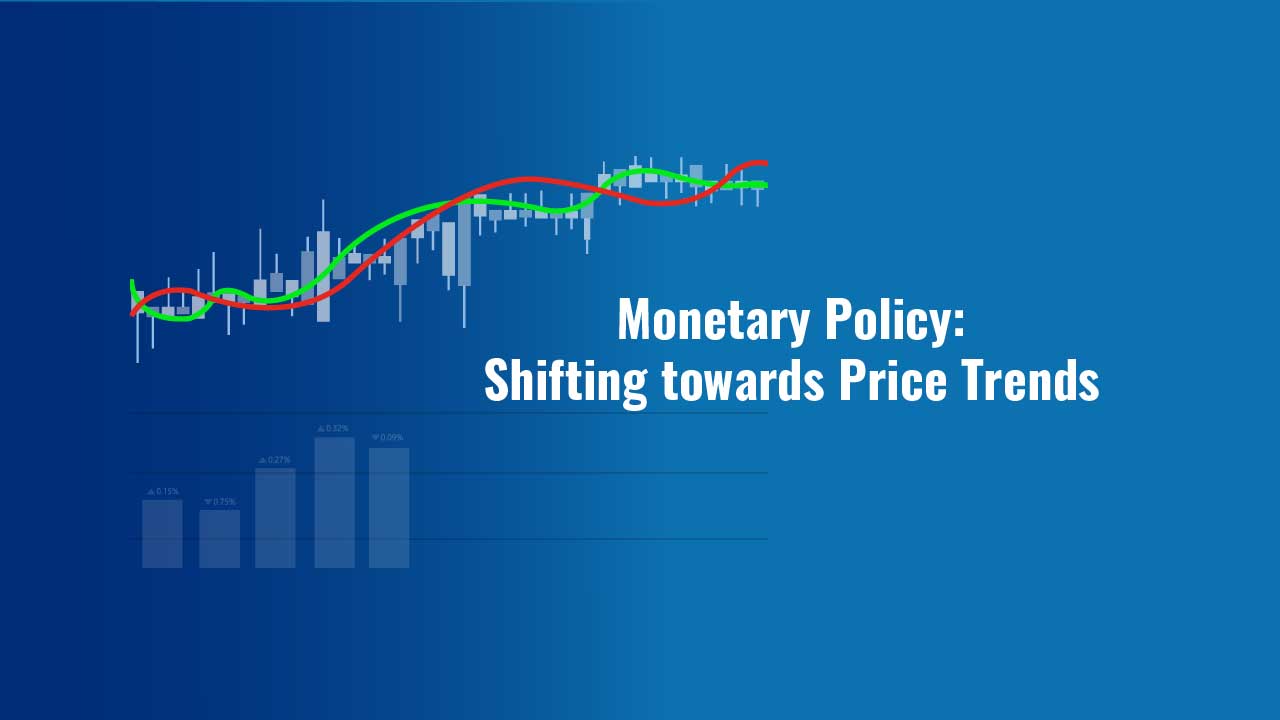Monetary Policy: Shifting towards Price Trends

Last Updated: 12th April 2022 - 05:23 pm
On 8th April, the Reserve Bank of India (RBI) announced the Monetary Policy for the month of April and kept the benchmark interest rate unchanged at 4 percent going forward decided to withdraw its accommodative stance to ensure that inflation remains within the target level.
The Committee, based on its assessment of the macroeconomic situation and outlook, voted to keep the policy repurchase (repo) rate unchanged at 4 percent.
MPC also decided to remain accommodative while focusing on the withdrawal of its current stance to ensure that inflation remains within the target band going forward. Consequently, the reverse repo rate will continue to earn 3.35 percent interest for banks for their deposits kept with the RBI.
The RBI slashed the growth projection for the current fiscal to 7.2 percent from 7.8 percent earlier; while raising the inflation forecast to 5.7 percent from 4.5 percent.
The MPC has been given the mandate to maintain annual inflation at 4 percent until March 31, 2026, with an upper tolerance of 6 percent and a lower tolerance level of 2 percent.
The bi-monthly policy comes against the backdrop of the Budget wherein a nominal gross GDP of 11.1 percent has been estimated for 2022-23.
The government expects this growth to be fuelled by a massive capital spending program outlined in the Budget with a view to crowd-in private investment by reinvigorating economic activities and creating demand.
The Ministry of Finance raised capital expenditure (CapEx) by 35.4 percent for the financial year 2022-23 to Rs.7.5 lakh crore to continue the public investment-led recovery of the pandemic-battered economy. The CapEx in the current financial year is pegged at Rs.5.5 lakh crore.
The spending on building multi-modal logistics parks, metro systems, highways, and trains is expected to create demand for the private sector as all the projects are to be implemented through contractors.
Overall all the rates remain unchanged with the introduction of the Standing Deposit facility at 3.75% which is likely to act as the floor of the LAF corridor and will replace the fixed-rate reverse repo. It will be an additional tool to absorb liquidity without any collateral. Accordingly, the LAF corridor was normalized back to 50bps (from earlier 90bps).
Also, a) the policy stance was revised down to less accommodative; and b) policy priority shifted in favor of price stability (compared to growth preference over the last 2 years). Overall, the policy was hawkish.
Incorporating higher commodity prices due to geopolitical tensions, RBI revised downwards its FY23 GDP growth estimate by 60bps to 7.2% YoY with Q1, Q2, Q3, and Q4 growth of 16.2%, 6.2%, 4.1%, and 4.0% respectively and increased inflation forecast by 120bps to 5.7% YoY with Q1, Q2, Q3 and Q4 inflation of 6.3%, 5.8%, 5.4%, and 5.1%.
Overall the monetary policy was quite hawkish with a change in stance to less accommodative and policy priority shift in favor of price stability (compared to growth preference over the last 2 years.
The inflation forecast for Q1 and Q2 FY23 indicates a risk of inflation breaching the upper tolerance level for 3 consecutive quarters. Overall, in the current inflationary environment, the MPC may change its stance to neutral in the next policy meet and expect 3 rate hikes (total of 75bps) in FY23.
- Performance Analysis
- Nifty Predictions
- Market Trends
- Insights on Market
Trending on 5paisa
Market Outlook Related Articles
Disclaimer: Investment in securities market are subject to market risks, read all the related documents carefully before investing. For detailed disclaimer please Click here.
 5paisa Research Team
5paisa Research Team
 Sachin Gupta
Sachin Gupta




